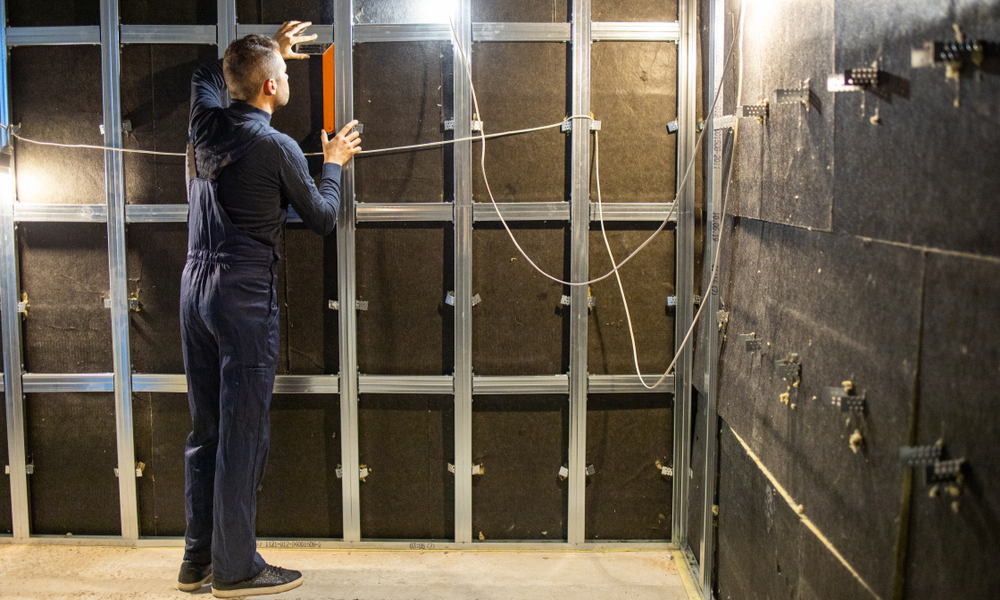Noise pollution is an uninvited guest that doesn’t know when to leave. Whether it’s the hum of traffic, your neighbor’s bass-heavy playlist, or the clatter of footsteps above, unwanted noise can intrude on your peace. Fortunately, soundproofing with insulation can turn your home into the sanctuary you deserve.
In this guide, I’ll walk you through how insulation can reduce noise, the best materials for soundproofing, and tips for achieving a quieter, more comfortable space.
What You’ll Discover in This Guide
The science behind how insulation controls noise.
The best types of insulation for sound reduction.
Tips to enhance the effectiveness of your soundproofing efforts.
Common mistakes to avoid for optimal results.
Bonus benefits of using insulation beyond noise reduction.
Why Quiet Spaces Matter
Let’s face it—peace and quiet are priceless in today’s noisy world. Noise isn’t just annoying; it can impact your mental health, sleep, and productivity. From creating a serene bedroom to minimizing distractions in your home office, soundproofing helps foster comfort and focus.
What makes insulation a great solution? It’s practical, cost-effective, and does more than just quiet things down. By addressing noise and improving energy efficiency, you tackle two problems with one solution.
How Insulation Reduces Noise

Sound waves move through the air and solid surfaces. Insulation acts as a barrier, absorbing or blocking these waves before they invade your space. Think of it as a sponge that soaks up sound, preventing it from bouncing around or seeping through walls and floors.
The key to sound reduction lies in density and thickness. Denser materials absorb sound better, while thicker insulation adds more layers for sound waves to travel through. Insulation’s effectiveness is often measured by its Sound Transmission Class (STC) rating—the higher the number, the better it blocks noise.
Top Insulation Materials for Soundproofing
Not all insulation materials are equally effective at reducing noise. Here are the best options for a quieter home:
1. Fiberglass Insulation
Fiberglass is lightweight, affordable, and widely used. It absorbs airborne sound and is ideal for walls, ceilings, and floors. Its versatility makes it a popular choice for residential soundproofing.
2. Spray Foam Insulation
Spray foam expands to fill gaps and cracks, creating an airtight seal that not only reduces noise but also improves energy efficiency. This makes it perfect for hard-to-reach areas and irregular surfaces.
3. Mineral Wool (Rock Wool)
Denser than fiberglass, mineral wool is excellent at absorbing sound vibrations. It’s often used in shared walls and ceilings for maximum sound reduction.
4. Blown-In Insulation
Made from materials like cellulose, blown-in insulation is great for filling cavities and tight spaces. Its ability to conform to irregular shapes makes it effective for noise control.
Where to Focus Your Soundproofing Efforts

Before you start adding insulation, identify the areas in your home where noise is most problematic. Focus on these key zones:
Walls: Shared walls and exterior walls are major culprits for transmitting noise.
Floors and Ceilings: Noise often travels vertically, making these areas crucial in multi-story homes.
Windows and Doors: These are common weak points where sound sneaks through.
If you’re dealing with especially loud spaces, consider combining insulation with other soundproofing techniques, like acoustic panels or heavy curtains.
Mistakes to Avoid in Soundproofing Projects
Soundproofing with insulation is straightforward, but there are a few pitfalls to watch for:
Skipping Sealing: Gaps and cracks allow sound to slip through. Always seal them before insulating.
Choosing the Wrong Material: Not all insulation types are ideal for noise reduction. Prioritize density and coverage.
Underestimating Coverage Needs: Insufficient insulation leaves room for sound to travel. Go for full coverage.
Rushing the Process: Proper installation ensures the best results, so take your time or hire a professional.
Tips for Better Soundproofing
Soundproofing isn’t just about stuffing insulation into walls—it’s about creating a holistic approach to noise reduction. Here are a few tips I recommend:
- Seal First
Before insulating, use caulk or weatherstripping to close gaps around windows, doors, and vents. Sound travels wherever air can move. - Double Up
Adding multiple layers of drywall or insulation can enhance sound absorption. This is especially useful for shared walls. - Consider the STC Rating
When choosing insulation, look for materials with a high STC rating to ensure maximum noise reduction. - Blend Methods
Combine insulation with other techniques like acoustic foam or carpets for better results. - Don’t Forget the Ceiling
Ceiling insulation is often overlooked but can significantly reduce sound transfer between floors.
Beyond Quiet: The Extra Benefits of Insulation
Soundproofing with insulation isn’t just about muting noise; it offers other perks, too:
Energy Efficiency: By improving your home’s thermal performance, insulation reduces heating and cooling costs. Learn more about how insulation cuts energy bills year-round.
Increased Comfort: Insulation creates a consistent indoor temperature, eliminating drafts.
Added Home Value: A quieter, energy-efficient home appeals to buyers. Explore how insulation boosts resale value.
Eco-Friendliness: Many insulation options are made from recycled or sustainable materials, making them environmentally friendly.
Should You DIY or Call a Pro?
While DIY soundproofing can be rewarding, it’s not always the best approach. Professionals bring expertise that ensures proper material selection and installation, which are critical for success.
I’ve seen how a skilled contractor can identify weak points and recommend tailored solutions. Check out why hiring a professional often pays off.
Extended Soundproofing Techniques
For noise sources like low-frequency bass or heavy machinery, insulation alone may not be enough. Here are additional solutions to consider:
Acoustic Panels: These absorb echoes and are perfect for home offices or recording studios.
Mass Loaded Vinyl (MLV): A dense, flexible material that blocks sound effectively.
Soundproof Curtains: Thick, heavy curtains can minimize noise from windows.
Final Thoughts: Peace Is Possible
Soundproofing with insulation is a smart, cost-effective way to reclaim your quiet space. By choosing the right materials and focusing on problem areas, you can significantly reduce noise while enjoying the added benefits of energy efficiency and comfort.
Take your time to plan, and don’t hesitate to bring in a professional for advice. Whether you’re battling noisy neighbors or creating a tranquil workspace, insulation is a reliable solution.
Ready to get started? A peaceful, comfortable home is just a few steps away. Trust me, it’s worth the effort.




